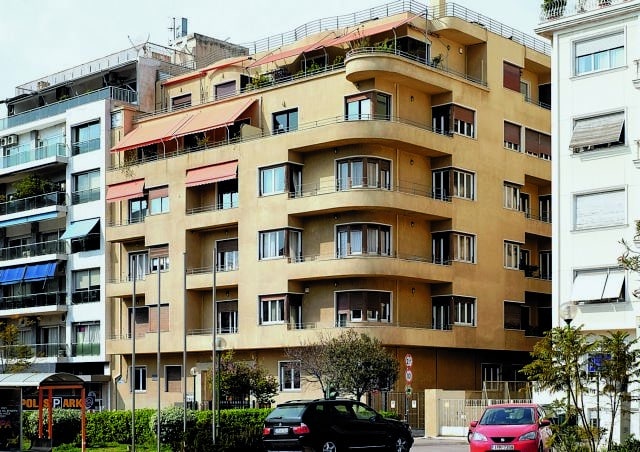
RESEARCH: THE ATHENIAN APARTMENT HOUSE THROUGH A GERMAN’S EYES
Architect Kilian Schmitz-Huebs talks about his research behind the photography exhibition opening at the Goethe Institute
In 2010 the architect Kilian Schmitz-Hubes, on an educational trip to Athens together with his students from the University of Karlsruhe to study the Athenian apartment building, had the unexpected encounter with modern urban life that seemed to him, as he says in “NEWS”, “much more attractive than most of the modern houses that had been built in the West Europe”.
As a guest of the Goethe Institute, the German architect will attend the opening of the exhibition “The apartment buildings of Athens, 1930-1975. The formation of a typology” based on the edition of the book “Athens’ Polykatoikias 1930-1975”, which is framed with photographs by Dimitris Kleanthi. “The apartment building type is not the solution to the housing problems faced by modern megacities. But it is certainly an inspiring model. Let us not forget that the block of flats was one of the last great urban housing typologies, at a time when the international urban discourse had completely abandoned the indoor dwelling. The small scale, reinforced concrete frame construction, elevator access and mix of residential and commercial uses created an incredibly robust and adaptable urban building unit that was capable of creating vibrant city life,” adds Schmitz-Hubbs.
His research presents apartment building plans from five decades, gathering photographs and architectural plans that trace the pioneering evolution of apartment building’s main features, such as floor plans, entrances and balconies. “For me, the most interesting features are the idea of tripartite zoning of the floor plans into living, sleeping and kitchen areas. This layout gave the apartments a functional clarity that is so foreign to German housing construction. Then, the concept of the central entrance of the apartment building offered areas of neighborhood and social interaction atmospherically charged thanks to their unique design. But also the elaborate ideas for the balconies, which eventually led to the image of the stacked plots in which the apartments were constantly surrounded by outdoor space.”
The lack of urban planning
What is the aesthetic value of massively multiplied concrete structures in a city that has not evolved its urban planning? “The lack of urban planning on the part of the city council of Athens, which accepted the demolition of the neoclassical city and allowed the almost complete overbuilding of small plots with high-rise apartment buildings, had a particularly negative impact on the quality of life in the city. The architects of the Greek modern movement had already foreseen this event since the 1930s and strongly called for the reorganization and consolidation of the small Athenian building blocks.
Interestingly, however, the lack of urban planning in Athens actually enhanced the aesthetic value of mass housing. While in the Western European metropolises of the post-war period monotonous settlements were built – design signs on the fringes of the city, Athens had to deal with this type of small-scale apartment building, which could not simply multiply, but adapted and differentiated according to the building area, topography and district. This is how this cohesive and at the same time diverse urban landscape emerged. From this point of view, the production of apartment buildings for consideration was a kind of new popular culture.’
Apartment buildings offered every social class a democratic way of modern living during the first decades of the 20th century. For the German architect, this request is more relevant than ever. “Existing block of flats still meet this requirement as they were built to different specifications depending on the area and thus catered to different social classes. In addition, there are neighborhoods today that have been abandoned by their original residents and now offer housing to low-income social classes who otherwise would not have access to it,” he observes.
Architecture, a social art
Overall, Athens “is still a city in which all social classes live quite close to each other. On the other hand, the new apartment buildings built in Athens in recent years are mostly a very exclusive model catering to the needs of a wealthy clientele. What is missing today are inner-city housing schemes for the lower income strata, such as those built in the past under the practice of compensation.’ He adds: “The critical task for architecture today is to remember that architecture is, as the architect Aristomenes Proveleggios once put it, a social art, a discipline that has the power to create spaces for human interaction and symbiosis. In the face of increasingly polarized societies, this places a huge responsibility on architecture, which it too often shirks. Especially in Greece, architecture is seen mainly as a luxury, as something for those who can afford it.”
Source: THE NEWS
